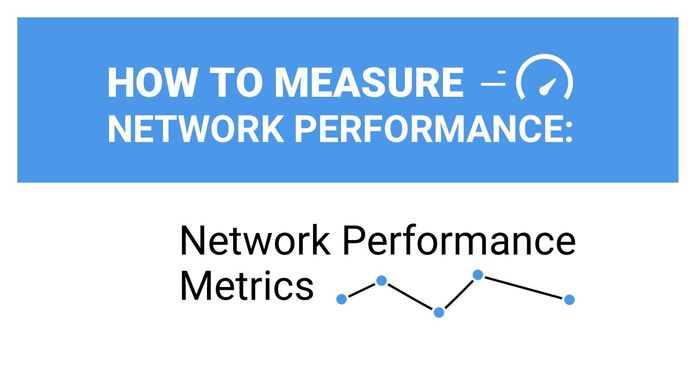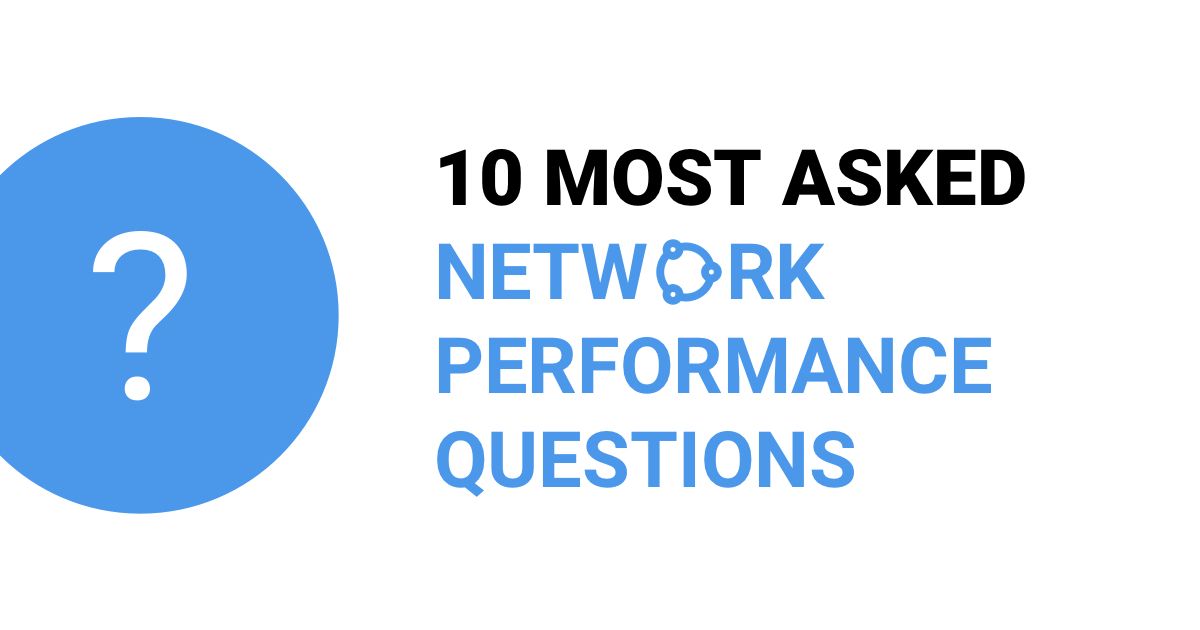Table of Contents
Table of Contents
Network administrators and IT professionals face the challenging task of ensuring smooth network performance, detecting and resolving issues promptly, and safeguarding network security. This is where real-time network monitoring comes into play.
Real-time network monitoring is a powerful approach that enables organizations to gain deep visibility into their networks by continuously monitoring network traffic, performance metrics, and security events.
By leveraging advanced monitoring tools and technologies, real-time network monitoring empowers network administrators to proactively identify and address network issues as they arise, ensuring optimal network performance, improved operational efficiency, and enhanced security.
Networks serve as the backbone of modern businesses, connecting various devices, systems, and applications to facilitate seamless communication, data exchange, and collaboration. Any disruption or degradation in network performance can have far-reaching consequences, impacting productivity, customer experience, and ultimately, the bottom line.
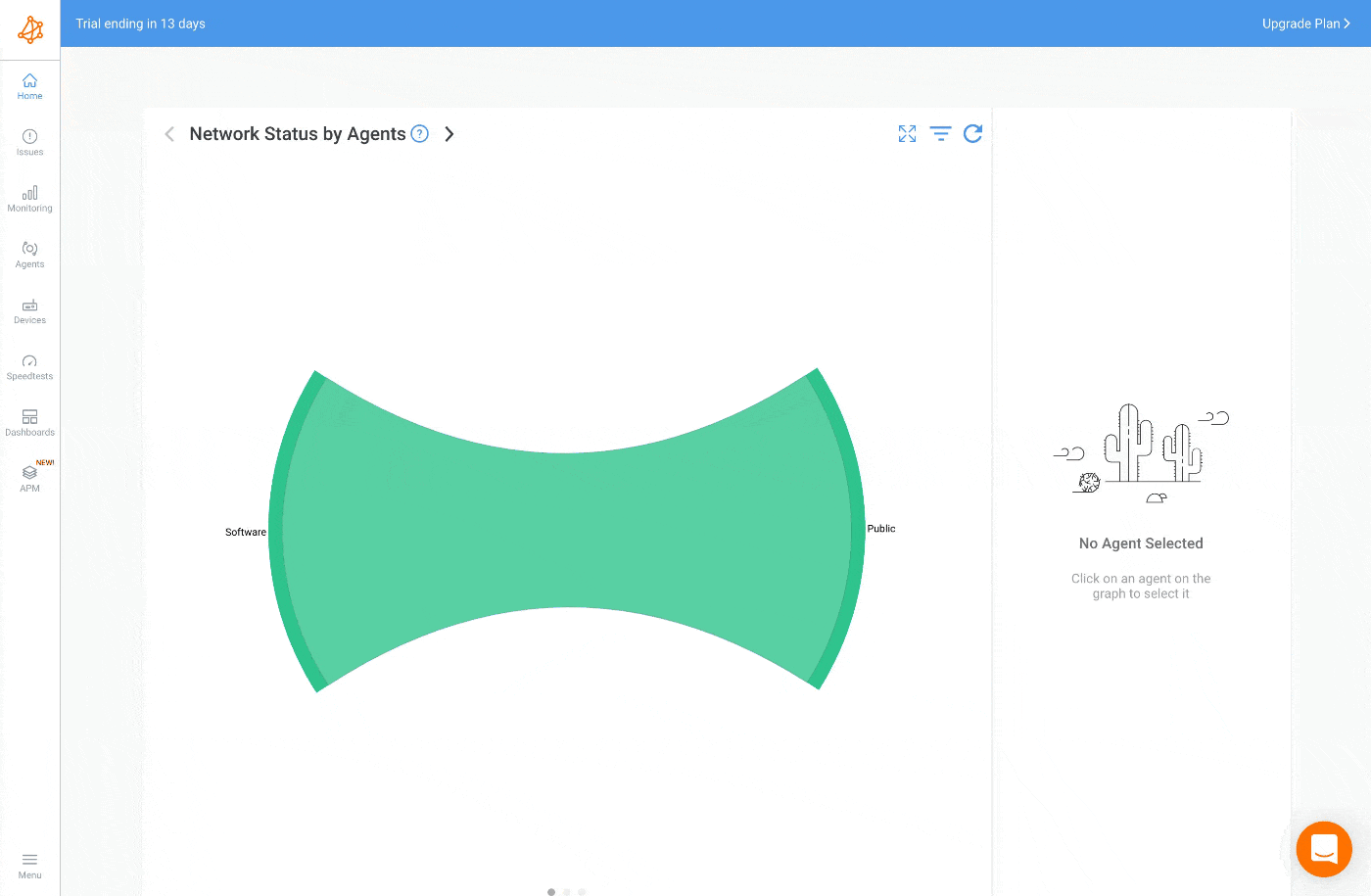
Effective network monitoring plays a crucial role in mitigating these risks and maintaining a healthy network infrastructure.
By constantly monitoring network components, such as routers, switches, firewalls, servers, and endpoints, organizations can gain real-time insights into network health, identify bottlenecks, anticipate potential issues, and take proactive measures to prevent network downtime and performance degradation.
Real-time network monitoring involves the continuous monitoring and analysis of network data, providing instant insights into network performance, utilization, and security events. It enables administrators to observe network activities as they occur, rather than relying on periodic or retrospective analysis.
Real-time monitoring tools collect data from network devices and sensors, utilizing various protocols such as SNMP (Simple Network Management Protocol), packet sniffing, flow monitoring, and endpoint monitoring.
This data is then analyzed, visualized, and presented in real-time dashboards, providing network administrators with a comprehensive view of the network's current state and enabling them to make informed decisions quickly.
Implementing a real-time network monitoring solution brings numerous benefits to organizations of all sizes and across industries. Some key advantages include:
- Early issue detection and resolution: Real-time network monitoring allows administrators to identify and resolve network issues as they happen, minimizing downtime and reducing the impact on users and business operations.
- Improved network performance: By monitoring network traffic, bandwidth utilization, and performance metrics, organizations can optimize network resources, identify and rectify bottlenecks, and ensure smooth and efficient network operations.
- Enhanced network security: Real-time monitoring enables the detection of security events, such as unauthorized access attempts, malware infections, and suspicious network behavior. This helps organizations respond swiftly to potential threats and protect sensitive data.
- Capacity planning and scalability: With real-time visibility into network usage patterns and trends, organizations can make informed decisions regarding capacity planning, ensuring that the network can handle future growth and demands.
In the following sections, we will delve deeper into the key components of real-time network monitoring, explore the types of data monitored, discuss monitoring techniques, and provide guidance on setting up and analyzing real-time network data. So let's begin our journey into the world of real-time network monitoring and unlock its immense potential for your organization's network infrastructure.
To understand real-time network monitoring thoroughly, it's essential to familiarize yourself with its key components. These components work in synergy to collect, analyze, and present network data in real-time, enabling administrators to make informed decisions. Let's explore the crucial components of real-time network monitoring:
At the core of real-time network monitoring are the specialized tools and software designed to capture and analyze network data. These tools employ various techniques such as packet sniffing, flow monitoring, and SNMP queries to gather information about network traffic, device performance, and security events. Examples of popular network monitoring tools include Obkio, PRTG Network Monitor, SolarWinds Network Performance Monitor, and Nagios.

These tools often provide a range of features, including customizable dashboards, real-time alerts, historical data analysis, and reporting capabilities.
They are typically deployed on dedicated servers or virtual machines within the network infrastructure to ensure continuous data collection and analysis.
Network sensors and probes are hardware or software components strategically placed within the network to collect data. They passively or actively monitor network traffic, capturing packets, flow records, or performance statistics.
Network sensors can be physical devices connected to switch ports or virtual appliances deployed within virtualized environments.
These sensors and probes play a vital role in real-time network monitoring by capturing granular data related to network performance, bandwidth utilization, and security events.
They forward this data to the monitoring tools for analysis and visualization.
Real-time network monitoring revolves around the continuous collection and analysis of network data. This data encompasses a wide range of information, including network traffic, protocols, performance metrics, error logs, and security events.
The monitoring tools receive the data from the network sensors or probes and process it in real-time.
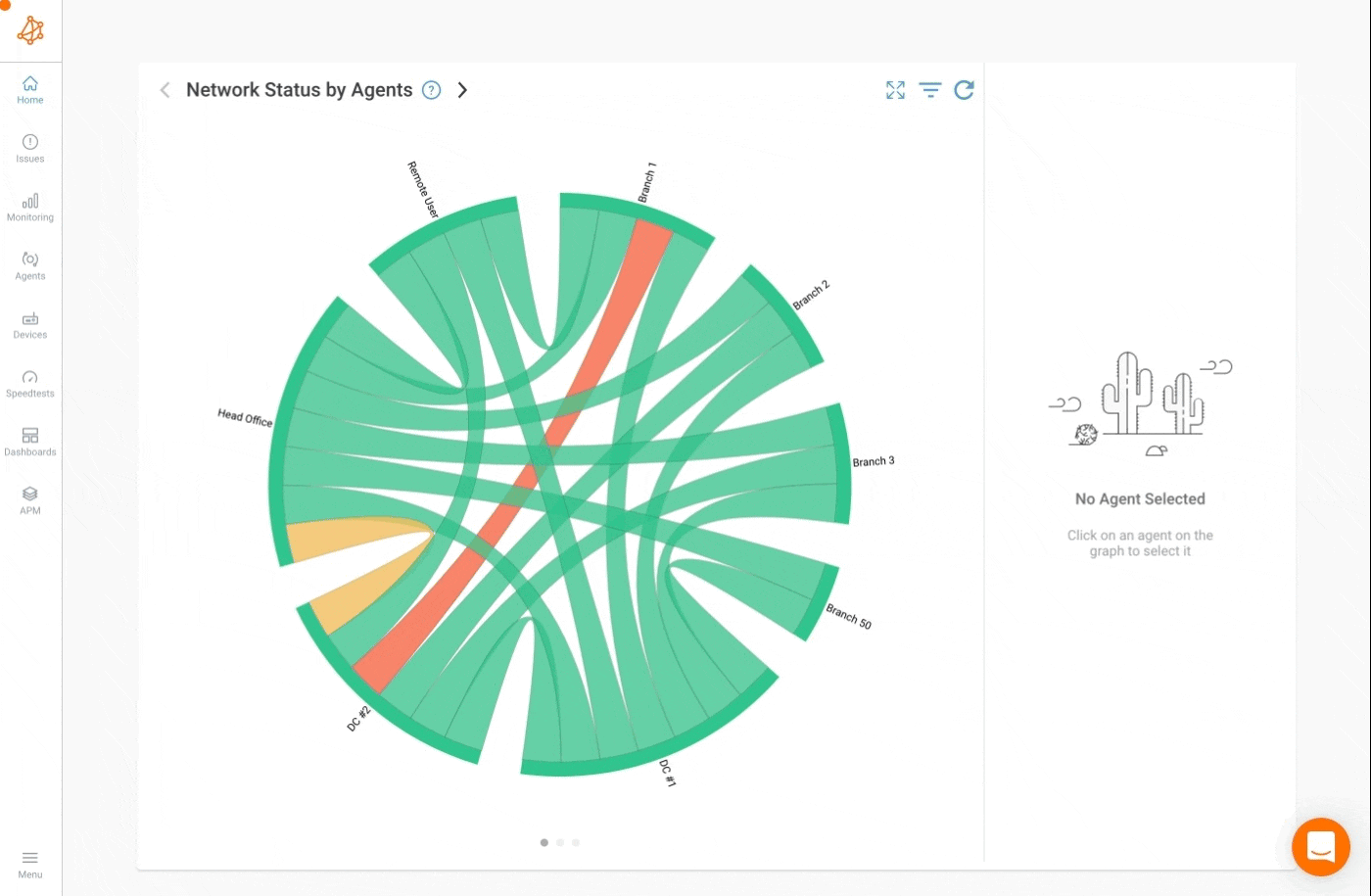
Data analysis involves examining network metrics, identifying patterns, and detecting anomalies or deviations from normal behavior. Advanced analytical techniques, such as statistical analysis, machine learning, and anomaly detection algorithms, are often employed to gain deeper insights into network performance and security.
By combining data collection with sophisticated analysis, real-time network monitoring tools can generate visualizations, reports, and alerts that provide administrators with a comprehensive understanding of network conditions.
In the next section, we will delve into the types of data monitored in real-time, shedding light on the specific aspects of the network that real-time monitoring focuses on. Understanding these data types will further enhance our grasp of how real-time network monitoring works and its potential benefits.
Confidently navigate the network monitoring tools landscape with our ultimate buyer's guide. Expert insights, use cases, and tips for informed choice
Learn more

Real-time network monitoring encompasses various types of data that are continuously monitored and analyzed to provide a comprehensive view of network performance and security. Let's explore the key types of data that real-time network monitoring focuses on:
Monitoring network traffic is a fundamental aspect of real-time network monitoring. It involves capturing and analyzing the flow of data packets within the network infrastructure.
By examining network traffic, administrators can gain insights into the volume of data being transmitted, the protocols being used, and the sources and destinations of network communication.
Learn about the differences between network speed, bandwidth & throughput. Find out why your business should measure them and how!
Learn more

Real-time monitoring of network traffic enables administrators to identify bandwidth-intensive applications, detect abnormal data patterns, and pinpoint potential bottlenecks or congestion points.
This information is crucial for optimizing network performance, ensuring efficient resource allocation, and maintaining a smooth user experience.
Real-time monitoring encompasses the tracking and analysis of various network performance metrics. These metrics provide insights into the speed, efficiency, and reliability of the network infrastructure. Some common performance metrics monitored in real-time include:
- Latency: Latency measures the delay experienced by data packets as they travel across the network. Monitoring latency helps identify network segments with high latency, enabling administrators to address connectivity issues and optimize network response times.
- Packet Loss: Packet loss occurs when data packets fail to reach their intended destination. Real-time monitoring detects packet loss occurrences, which can indicate network congestion, hardware failures, or configuration issues. Prompt identification of packet loss allows administrators to take corrective actions and maintain data integrity.
- Network Utilization: Monitoring network utilization provides visibility into how network resources are being utilized. It helps administrators identify potential bandwidth bottlenecks, plan for capacity upgrades, and ensure optimal resource allocation.
- Throughput: Throughput measures the amount of data that can be transmitted over the network within a given time period. Real-time monitoring of throughput enables administrators to evaluate network performance, detect anomalies, and ensure that the network can handle the required data transfer rates.
Learn how to measure network performance with key network metrics like throughput, latency, packet loss, jitter, packet reordering and more!
Learn more

Real-time network monitoring is also essential for detecting and responding to security events in a timely manner. It involves monitoring network activity for signs of unauthorized access, suspicious behavior, or potential security breaches.
By analyzing network traffic and security logs in real-time, administrators can identify security incidents and take immediate action to mitigate risks.
Security event monitoring includes activities such as intrusion detection, firewall log analysis, identification of malware infections, and monitoring of user authentication and access control systems.
Real-time detection and response to security events are critical for preventing data breaches, protecting sensitive information, and maintaining the integrity of the network infrastructure.
By monitoring network traffic, performance metrics, and security events in real-time, organizations can proactively manage their networks, ensure optimal performance, and respond swiftly to potential issues or security threats.
In the next section, we will explore the various techniques employed in real-time network monitoring, shedding light on how these data types are collected and analyzed in practice.
Real-time network monitoring employs various techniques to capture, analyze, and interpret network data in real-time. These techniques provide valuable insights into network performance, security, and overall health. Let's explore some of the key techniques used in real-time network monitoring:
Packet sniffing involves capturing and analyzing network packets as they traverse the network infrastructure. Network monitoring tools equipped with packet sniffing capabilities intercept and analyze packet headers and payloads to extract valuable information about network traffic, protocols, and data content.
Deep Packet Inspection (DPI) takes packet sniffing a step further by performing detailed analysis of packet contents, including application-layer data. By inspecting packet payloads, DPI can identify specific applications or protocols being used, detect potential security threats, and provide granular visibility into network behavior.
Packet sniffing and DPI enable real-time network monitoring tools to understand network traffic patterns, monitor application performance, and identify potential security vulnerabilities or unauthorized activities.
Flow monitoring techniques provide aggregated and summarized views of network traffic. They involve collecting and analyzing flow records, which represent a series of related network packets sharing common characteristics, such as source and destination IP addresses, ports, and protocols.
Protocols like NetFlow, sFlow, IPFIX (Internet Protocol Flow Information Export), and others facilitate flow monitoring. These protocols allow network devices to export flow records to dedicated flow collectors or monitoring tools.
By analyzing flow records, administrators can gain insights into network utilization, top talkers, application performance, and potential security threats.
Flow monitoring is particularly useful in large networks, as it provides a scalable approach to capturing and analyzing network data without overwhelming monitoring systems with a high volume of individual packets.
Simple Network Management Protocol (SNMP) is a widely adopted protocol for monitoring and managing network devices. SNMP monitoring (or SNMP network monitoring) involves querying network devices, such as routers, switches, and servers, to retrieve information about their operational status, performance metrics, and configuration details.
Real-time SNMP monitoring enables administrators to monitor key metrics, such as CPU and memory utilization, interface status, link errors, and device health. By actively querying SNMP-enabled devices, administrators can receive real-time updates on network conditions, rapidly detect device failures, and ensure optimal device performance.
Endpoint monitoring focuses on monitoring the devices connected to the network, such as workstations, laptops, servers, and mobile devices. Endpoint monitoring tools track the health, performance, and security status of these devices in real-time.
Endpoint monitoring involves collecting data such as system resource usage, software inventory, patch levels, security events, and user activity. This data helps administrators detect and respond to endpoint issues promptly, identify security threats or policy violations, and ensure compliance with organizational standards.
By employing these real-time network monitoring techniques, organizations can gain comprehensive visibility into network activities, performance metrics, and security events.
In the next section, we will explore the process of setting up a real-time network monitoring system, including considerations for selecting the right tools and configuring network devices and sensors.
Implementing a real-time network monitoring system requires careful planning and configuration to ensure accurate data collection and effective analysis. Here are the key steps involved in setting up a real-time network monitoring system:
Before diving into the technical aspects, it's crucial to define the objectives and requirements of your network monitoring system. Consider the specific needs of your organization, such as monitoring critical applications, ensuring compliance with service-level agreements, or detecting security breaches.

Determine the key metrics and data types you need to monitor in real-time to achieve your monitoring goals effectively.
Choosing suitable network monitoring tools and software is vital for a successful implementation. Evaluate different options based on factors like scalability, feature set, ease of use, and compatibility with your network infrastructure.

Look for tools that support the desired monitoring techniques discussed earlier, such as packet sniffing, flow monitoring, SNMP, and endpoint monitoring. Consider whether the tools provide real-time visualization, alerting capabilities, and integration with other systems.
To collect real-time network data, you need to configure your network devices and sensors to send data to the monitoring system.
This may involve enabling protocols like NetFlow or sFlow on routers and switches, configuring SNMP settings on network devices, or deploying software agents on endpoints for endpoint monitoring. Ensure that the devices and sensors are correctly configured to export the necessary data to the monitoring system.
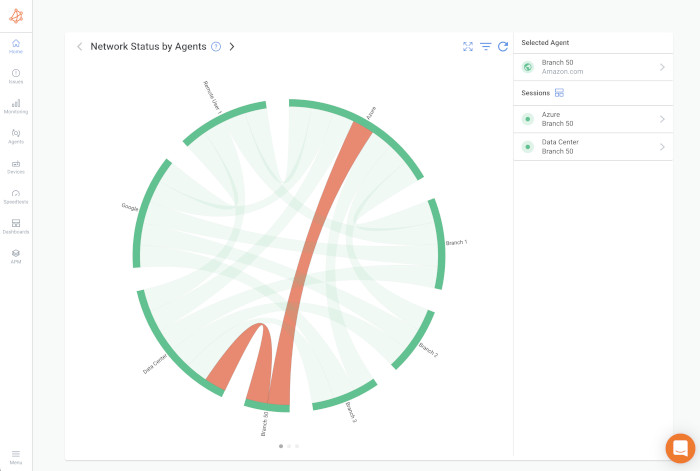
To effectively monitor network performance, establish appropriate monitoring parameters and thresholds. Set thresholds for metrics like bandwidth utilization, latency, and packet loss, based on acceptable performance levels or service-level agreements.
When these thresholds are exceeded, the monitoring system should generate alerts to notify administrators promptly.
Create customized real-time dashboards that present relevant network metrics and data in a clear and concise manner. Visualizations such as charts, graphs, and heatmaps can help administrators quickly identify anomalies or performance issues.
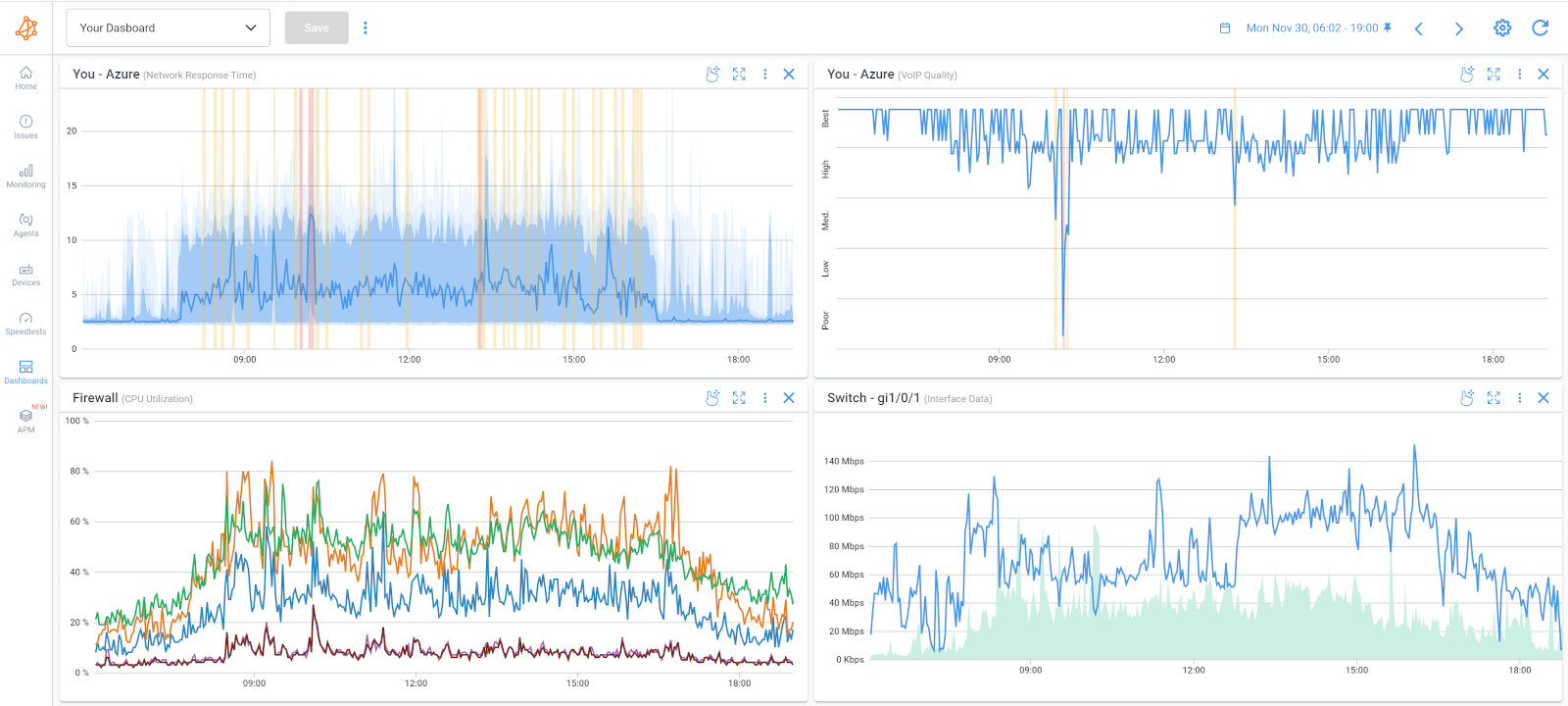
Configure real-time network monitoring alerts to notify administrators when specific conditions or thresholds are met, ensuring immediate attention to critical events.
Before deploying the monitoring system in a production environment, thoroughly test its functionality and performance. Validate data collection, ensure accurate analysis and visualization, and verify the effectiveness of alerting mechanisms.
Fine-tune the system by adjusting monitoring parameters, thresholds, or dashboards based on the insights gained during testing.
For a holistic network management approach, consider integrating your real-time network monitoring system with other IT operations systems. Integration with IT service management tools, incident management systems, or configuration management databases can streamline processes and enhance collaboration among teams.
This integration allows seamless coordination between network monitoring and other IT operations, facilitating efficient troubleshooting, incident response, and change management.
By following these steps, you can set up a robust and effective real-time network monitoring system. The next section will focus on analyzing real-time network data, exploring techniques for dashboard visualization, alerting, trend analysis, and reporting.
Once real-time network data is collected, the next step is to analyze and derive meaningful insights from it. Effective analysis enables administrators to monitor network performance, identify anomalies, and make informed decisions. Let's explore key aspects of analyzing real-time network data:
Real-time network monitoring tools often provide customizable dashboards that display visual representations of network data. Dashboards consolidate important metrics, charts, graphs, and other visual elements into a single interface, allowing administrators to quickly assess the network's health and performance.
Visualizations can include real-time graphs showing network traffic patterns, bandwidth utilization, or performance metrics such as latency and packet loss. Heatmaps can be used to identify areas of high traffic or potential congestion.
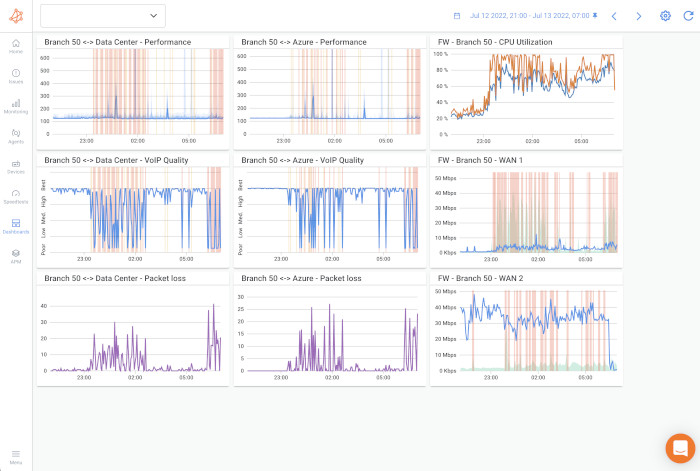
Color-coded indicators and status widgets can provide an at-a-glance view of critical metrics and alarms.
By leveraging intuitive visualizations, administrators can rapidly identify network issues, track performance trends, and take proactive measures to optimize network operations.
Real-time network monitoring systems employ alerting mechanisms to notify administrators when specific conditions or thresholds are met. These alerts help administrators respond promptly to critical events or performance deviations.
Alerts can be triggered for various scenarios, such as high CPU usage on a critical device, sudden spikes in network traffic, or security incidents like unauthorized access attempts.
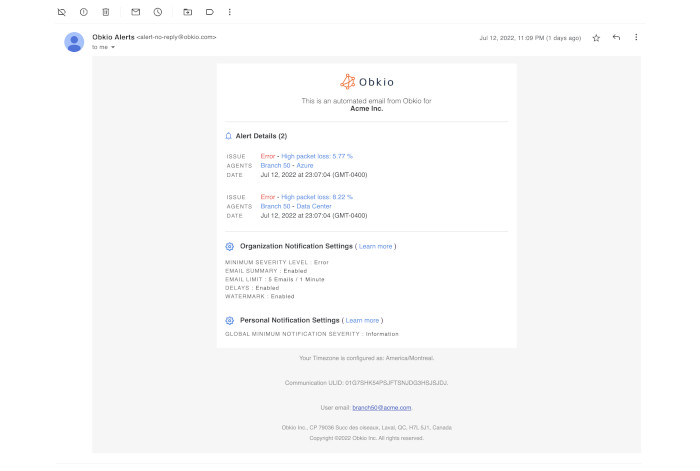
Administrators can configure the severity levels and notification channels (email, SMS, or dedicated monitoring apps) for each alert.
Well-configured alerting systems ensure that administrators are promptly informed about network issues, allowing them to take immediate action and minimize the impact on network performance and security.
Real-time network monitoring systems can analyze historical data to identify trends and patterns. By analyzing long-term performance metrics, administrators can detect subtle changes, anticipate future issues, and make informed decisions regarding network capacity planning and resource allocation.
Trend analysis provides insights into network usage patterns, peak traffic periods, and recurring performance issues. It helps administrators identify areas of improvement, optimize network infrastructure, and align network resources with evolving business needs.
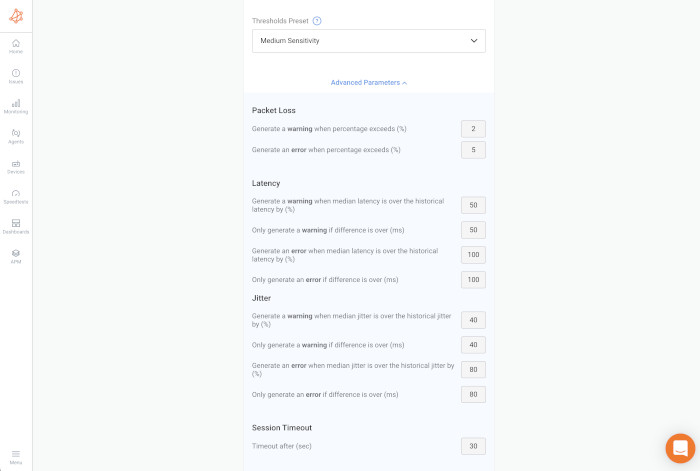
Reporting capabilities within monitoring systems allow administrators to generate comprehensive reports based on real-time and historical network data. Reports can include network performance metrics, security event summaries, and recommendations for network optimization.
These reports serve as valuable documentation and support for decision-making processes and can be shared with stakeholders, management, or compliance auditors.
Real-time network monitoring enables proactive network management by allowing administrators to detect and address potential issues before they escalate. By continuously monitoring network performance, administrators can identify bottlenecks, resolve configuration errors, and fine-tune network devices to optimize performance.
Proactive management also involves capacity planning based on real-time and historical data. Administrators can forecast future network demands, identify potential resource limitations, and make necessary infrastructure upgrades to accommodate growth.
Additionally, real-time monitoring systems can integrate with automation and orchestration tools, enabling automated response actions to specific network events or conditions. This further enhances the efficiency of network management and reduces manual intervention.
By leveraging real-time network data analysis, administrators can proactively maintain network performance, ensure optimal resource utilization, and deliver a seamless user experience.
In the next section, we will explore best practices for real-time network monitoring, providing guidelines for defining monitoring policies, ensuring data privacy and security, and integrating network monitoring with IT operations.
Implementing real-time network monitoring requires adherence to best practices to ensure its effectiveness and maximize the benefits it provides. Let's explore some key best practices for real-time network monitoring:
Establishing clear monitoring policies and procedures is crucial for effective real-time network monitoring. Define the scope of monitoring, the metrics to be monitored, and the frequency of data collection.
Document guidelines for interpreting data, analyzing trends, and responding to alerts. Standardizing monitoring practices ensures consistency and enables efficient collaboration among network administrators.
Real-time network monitoring involves collecting and analyzing sensitive network data. To protect the privacy and security of this data, implement appropriate security measures. Use encryption techniques to secure data transmission between monitoring systems and network devices.
Implement access controls and authentication mechanisms to restrict access to monitoring tools and data.
Regularly update monitoring systems with security patches and follow industry best practices for data protection.
To optimize network management, integrate real-time network monitoring with other IT operations systems. Align network monitoring with incident management, change management, and configuration management processes.
This integration enables seamless collaboration among teams, facilitates faster incident resolution, and enhances overall network performance and reliability.
Network environments evolve over time, and monitoring requirements may change accordingly. Regularly review and update monitoring policies to align them with evolving business needs and technological advancements.
Assess the effectiveness of monitoring tools and adjust configuration settings as required. Stay informed about emerging network threats and industry best practices to adapt monitoring strategies proactively.
Automation and artificial intelligence (AI) technologies can enhance real-time network monitoring capabilities. Implement automated workflows for routine monitoring tasks, such as device discovery or data collection.
Utilize AI algorithms for anomaly detection, pattern recognition, and predictive analysis. Automation and AI-driven insights can help administrators identify network issues faster and reduce manual effort in monitoring and troubleshooting processes.
Focus on monitoring key performance indicators (KPIs) that align with your organization's objectives and network requirements. Identify KPIs that directly impact user experience, application performance, or security.
Continuously monitor these KPIs in real-time to ensure that the network is meeting defined performance targets and security standards.
Real-time network monitoring is an ongoing process. Regularly evaluate the effectiveness and performance of your monitoring system. Assess whether it captures the necessary data, provides meaningful insights, and delivers actionable information.
Optimize monitoring configurations, thresholds, and dashboards based on feedback and changing network dynamics.
By following these network monitoring best practices, organizations can ensure the success and effectiveness of their real-time network monitoring initiatives. These practices foster proactive network management, enhance security, and optimize network performance.
In the concluding section, we will explore future trends in real-time network monitoring, highlighting emerging technologies and their potential impact on network monitoring practices.
As technology continues to evolve, real-time network monitoring is poised to embrace emerging trends and technologies. These developments hold the potential to revolutionize network monitoring practices and further enhance network performance, security, and management. Let's explore some future trends in real-time network monitoring:
Artificial intelligence (AI) and machine learning (ML) are playing an increasingly important role in network monitoring.
By integrating AI and ML capabilities into real-time monitoring systems, administrators can leverage advanced analytics to identify complex patterns, anomalies, and security threats. AI-powered algorithms can learn from historical data, detect network performance issues, predict potential problems, and automate remediation processes.
This integration enables more efficient network monitoring, faster incident response, and improved network performance optimization.
Software-defined networking (SDN) and network virtualization technologies are transforming network infrastructures, and real-time network monitoring is evolving alongside them. SDN allows for centralized network management, programmability, and dynamic traffic control.
Real-time monitoring systems can integrate with SDN controllers to gain deep visibility into virtualized networks, monitor network overlays, and track traffic flows in real-time.
This enables administrators to adapt to network changes quickly, optimize network resources, and maintain high performance levels across virtualized environments.
Automation is becoming increasingly prevalent in network operations, and real-time network monitoring is no exception.
Automation tools can proactively monitor network health, detect anomalies, and trigger automated responses to network events. Self-healing networks, empowered by automation and machine learning, can automatically identify and resolve network issues in real-time, minimizing downtime and reducing the need for manual intervention.
This trend streamlines network management processes, improves network availability, and frees up administrators to focus on strategic initiatives.
The proliferation of Internet of Things (IoT) devices introduces new challenges for network monitoring.
Real-time network monitoring systems are adapting to accommodate the unique characteristics and requirements of IoT environments. They enable administrators to monitor and manage IoT device connectivity, traffic patterns, and security vulnerabilities.
With the increasing number of IoT devices, real-time monitoring plays a vital role in ensuring the stability, security, and performance of IoT networks.
Real-time network monitoring systems are continuously evolving their visualization capabilities. Advanced network visualizations, including 3D representations, interactive dashboards, and augmented reality overlays, provide administrators with intuitive and immersive ways to analyze network data.
Predictive analytics models are also gaining prominence, allowing administrators to anticipate network performance issues, plan for capacity upgrades, and optimize network resources proactively.
By embracing these future trends, organizations can unlock new levels of network visibility, performance optimization, and security management. Real-time network monitoring will continue to evolve, enabling administrators to stay ahead of network challenges and ensure the smooth operation of their networks.
Real-time network monitoring is a critical component of modern network management, enabling organizations to proactively monitor and optimize their network infrastructure.

By leveraging advanced monitoring tools, analyzing real-time data, and embracing future trends, administrators can ensure optimal network performance, enhance security, and deliver a seamless user experience.
As technology progresses, the capabilities and potential of real-time network monitoring will continue to expand, empowering organizations to stay agile and responsive in the ever-changing digital landscape.


























 Obkio Blog
Obkio Blog






